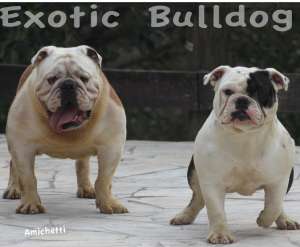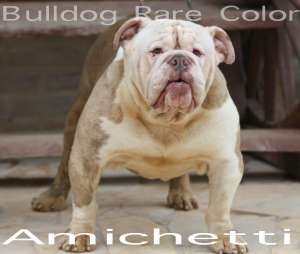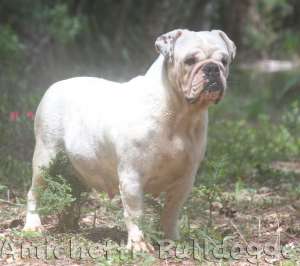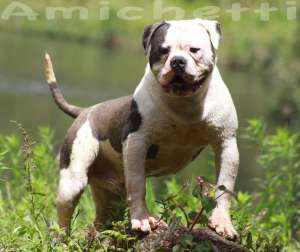olde english bulldogge
olde english bulldogge
-
Antigo Bulldog Inglês Olde English Bulldogge
 Antigo Bulldogge Inglês / Olde English BulldoggeDESCRIÇÃO DA RAÇA E INFORMAÇÕES TemperamentoCão de segurança, adora crianças, temperamento amigo e confiavel, veneração pela familia .Canil Destaque: Criador Petclube de Juquitiba SP Brasilwthasapp Venda de filhotes de bulldogg F 11 99386 8744 hcPedigree PetclubeNos últimos 30 anos ou mais, vários criadores de todo o mundo têm tentado valorizar o antigo Bulldog,
Antigo Bulldogge Inglês / Olde English BulldoggeDESCRIÇÃO DA RAÇA E INFORMAÇÕES TemperamentoCão de segurança, adora crianças, temperamento amigo e confiavel, veneração pela familia .Canil Destaque: Criador Petclube de Juquitiba SP Brasilwthasapp Venda de filhotes de bulldogg F 11 99386 8744 hcPedigree PetclubeNos últimos 30 anos ou mais, vários criadores de todo o mundo têm tentado valorizar o antigo Bulldog,
pois é um cão que possui as qualidades de rusticidade muito mais firmadas que sua versão atual de pistas.O antigo Buldogue Inglês, ou Old English Bulldog, cão de guarda e trabalho que sobreviveu até o início do Século XX, possui uma enorme legião de admiradores em todo o mundo, graças a sua rusticidade, agilidade e funcionalidade.
Versões de Olde Bulldogge tem sido selecionadas e desenvolvidas por criadores , dentro de seu próprio programa e padrão:Olde Bulldogge LeavittO cão conhecido como The Olde Inglês Bulldogge é o produto do programa de melhoramento lançada pelo Sr. David Leavitt da Pensilvânia em 1971. Sr. Leavitt amava a natureza da raça Bulldog, mas estava profundamente preocupado com as limitações físicas da raçado bulldog de pistas, conhecido também como bulldog inglês. Com grande conhecimento sobre a história da raça e genética, o Sr. Leavitt embarcou em um ambicioso programa de melhoramento visando recriar o estilo antigo Bulldog.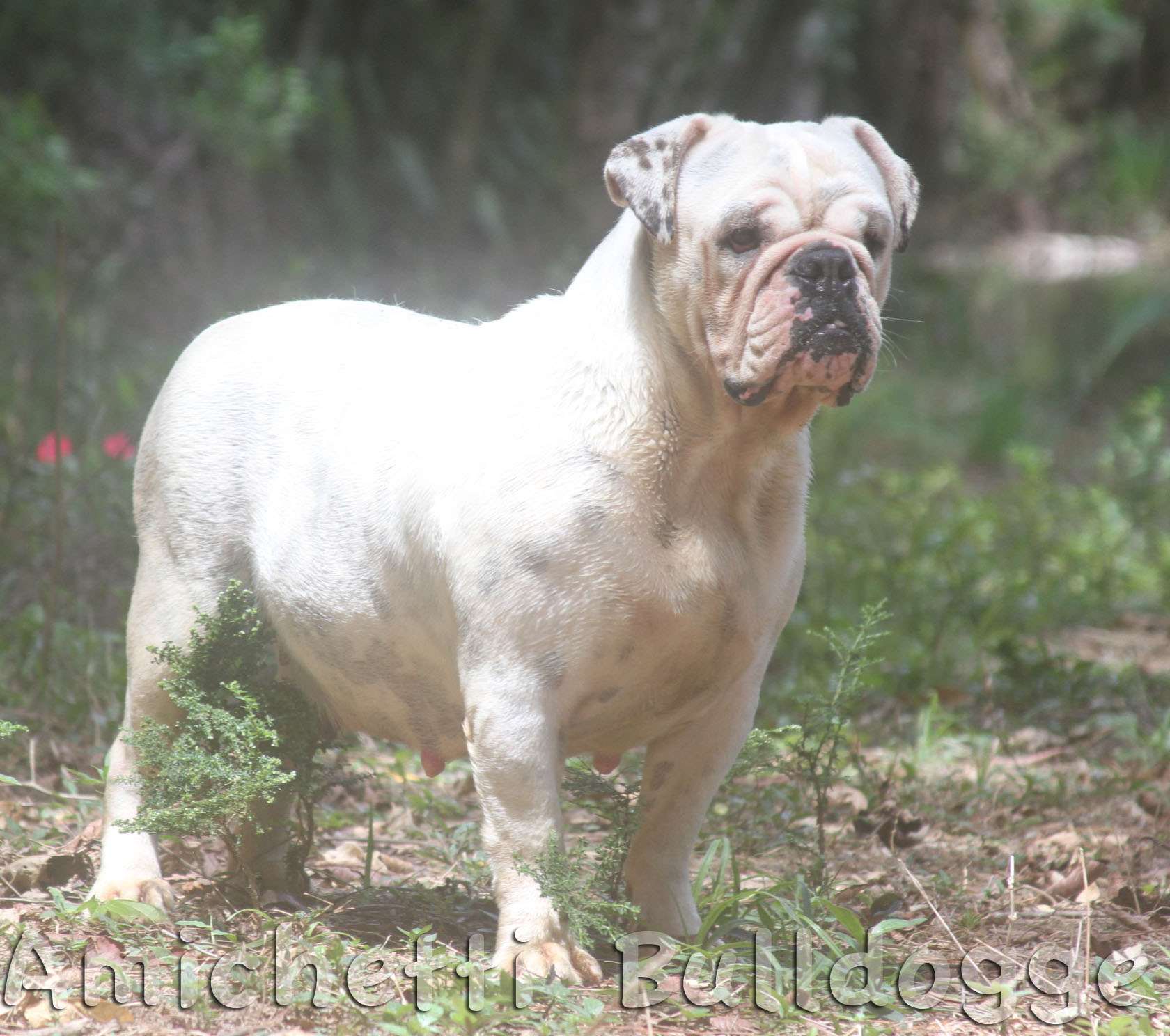 Depois de muitos cruzamentos cuidadosamente planejados com raças como Bullmastiff , American Pit Bull Terriers e American Bulldog , o Sr. Leavitt alcançado seu objetivo, quando a raça foi conhecida como o Olde Bulldogge Inglês, a fim de diferenciar a sua linhagem da população maior de OEBs, ele resolveu renomeá-lo para o Bulldog Leavitt. Depois de frustradas tentativas de convencer os membros do conselho OEBKC a concordar com a mudança de nome, o Sr. Leavitt renunciou ao seu cargo como presidente em 07 dezembro de 2005 e, recentemente, formaram a Associação Leavitt BulldogRenascence BulldoggeO Renascence Bulldogge Kennel Club foi iniciado por Chadde Jolicoeur Willingham e Jody quando tornou-se frustrado pela falta de uniformidade e coerência na recriações Bulldogge, sendo atualmente cinhecido com nome de Olde IBulldogge.Olde Bulldogge VitorianoO Olde Bulldogge Vitoriano, ou OVB como é vulgarmente conhecido, é uma linha criada por Carlos Woods of My Bulldogges / Madeira Bulls na Carolina do Norte.O Olde Bulldogge vitoriano está sendo produzido e apresentado como na época vitoriana.O OVB é um cão de pêlo curto com um tronco largo. Ele tem cabeça grande, com ossos grossos que não impedem seu pleno vigor.O Bulldogge Olde vitoriana é leal, corajoso e deve ter um temperamento estável.
Depois de muitos cruzamentos cuidadosamente planejados com raças como Bullmastiff , American Pit Bull Terriers e American Bulldog , o Sr. Leavitt alcançado seu objetivo, quando a raça foi conhecida como o Olde Bulldogge Inglês, a fim de diferenciar a sua linhagem da população maior de OEBs, ele resolveu renomeá-lo para o Bulldog Leavitt. Depois de frustradas tentativas de convencer os membros do conselho OEBKC a concordar com a mudança de nome, o Sr. Leavitt renunciou ao seu cargo como presidente em 07 dezembro de 2005 e, recentemente, formaram a Associação Leavitt BulldogRenascence BulldoggeO Renascence Bulldogge Kennel Club foi iniciado por Chadde Jolicoeur Willingham e Jody quando tornou-se frustrado pela falta de uniformidade e coerência na recriações Bulldogge, sendo atualmente cinhecido com nome de Olde IBulldogge.Olde Bulldogge VitorianoO Olde Bulldogge Vitoriano, ou OVB como é vulgarmente conhecido, é uma linha criada por Carlos Woods of My Bulldogges / Madeira Bulls na Carolina do Norte.O Olde Bulldogge vitoriano está sendo produzido e apresentado como na época vitoriana.O OVB é um cão de pêlo curto com um tronco largo. Ele tem cabeça grande, com ossos grossos que não impedem seu pleno vigor.O Bulldogge Olde vitoriana é leal, corajoso e deve ter um temperamento estável.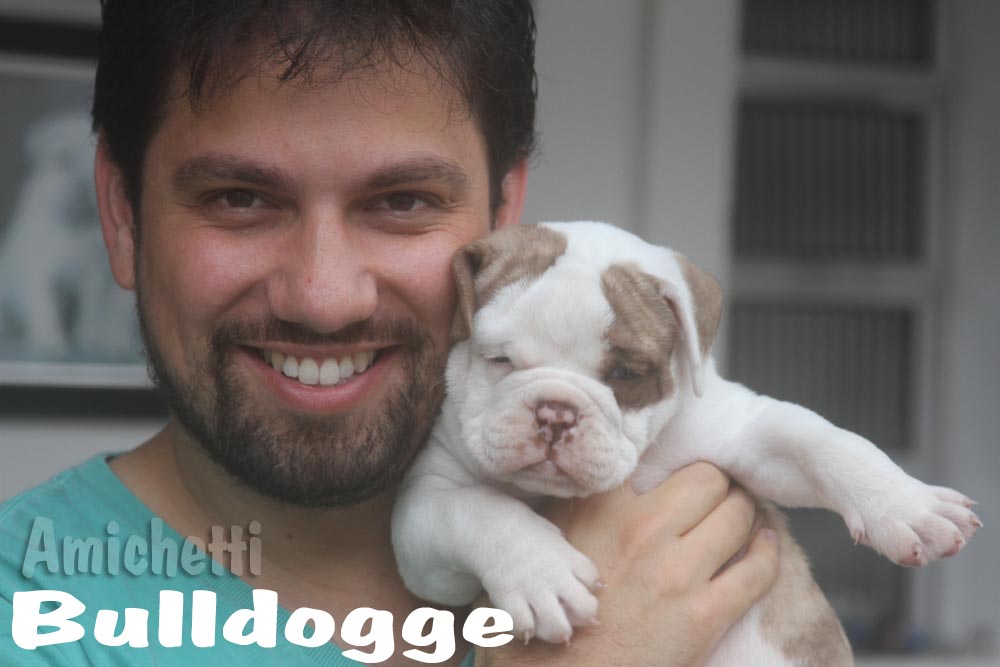 Olde English BulldoggeO Old Bulldog é um cão musculoso, de tamanho médio, grande força, estabilidade e capacidade atlética.O Old English bulldog, ou antigo bullfog inglês é bem equilibrado e proporcionado.o Antigo bulldog inglês tem a aparência de um cão capaz de fazer o seu trabalho original, bull baiting.A cabeça OEB é proeminente e dramática. As bochechas são grandes, bem desenvolvidos e mostra os músculos de poderosa mandíbula. O crânio é grande, mas bem proporcionado de corpo musculoso e ombros proeminentes. O focinho é quadrado, largo e profundo, com angulação definida. A mordida é prognata Os dentes caninos são grandes. As narinas são largas, com uma linha traçada verticalmente do nariz até a parte inferior do lábio superior. O nariz é grande e ampla em relação à largura do focinho. O nariz é de cor preta. As orelhas são rosa, botão ou tulipa, com preferência para rosa. As costelas são bem arqueadas e arredondado. Ombros para pernas dianteiras são bem musculadas. Quadris e coxas são fortes e musculosos. Os posteriores são bem musculosos e ligeiramente mais longo que os anteriores. A cor
Olde English BulldoggeO Old Bulldog é um cão musculoso, de tamanho médio, grande força, estabilidade e capacidade atlética.O Old English bulldog, ou antigo bullfog inglês é bem equilibrado e proporcionado.o Antigo bulldog inglês tem a aparência de um cão capaz de fazer o seu trabalho original, bull baiting.A cabeça OEB é proeminente e dramática. As bochechas são grandes, bem desenvolvidos e mostra os músculos de poderosa mandíbula. O crânio é grande, mas bem proporcionado de corpo musculoso e ombros proeminentes. O focinho é quadrado, largo e profundo, com angulação definida. A mordida é prognata Os dentes caninos são grandes. As narinas são largas, com uma linha traçada verticalmente do nariz até a parte inferior do lábio superior. O nariz é grande e ampla em relação à largura do focinho. O nariz é de cor preta. As orelhas são rosa, botão ou tulipa, com preferência para rosa. As costelas são bem arqueadas e arredondado. Ombros para pernas dianteiras são bem musculadas. Quadris e coxas são fortes e musculosos. Os posteriores são bem musculosos e ligeiramente mais longo que os anteriores. A cor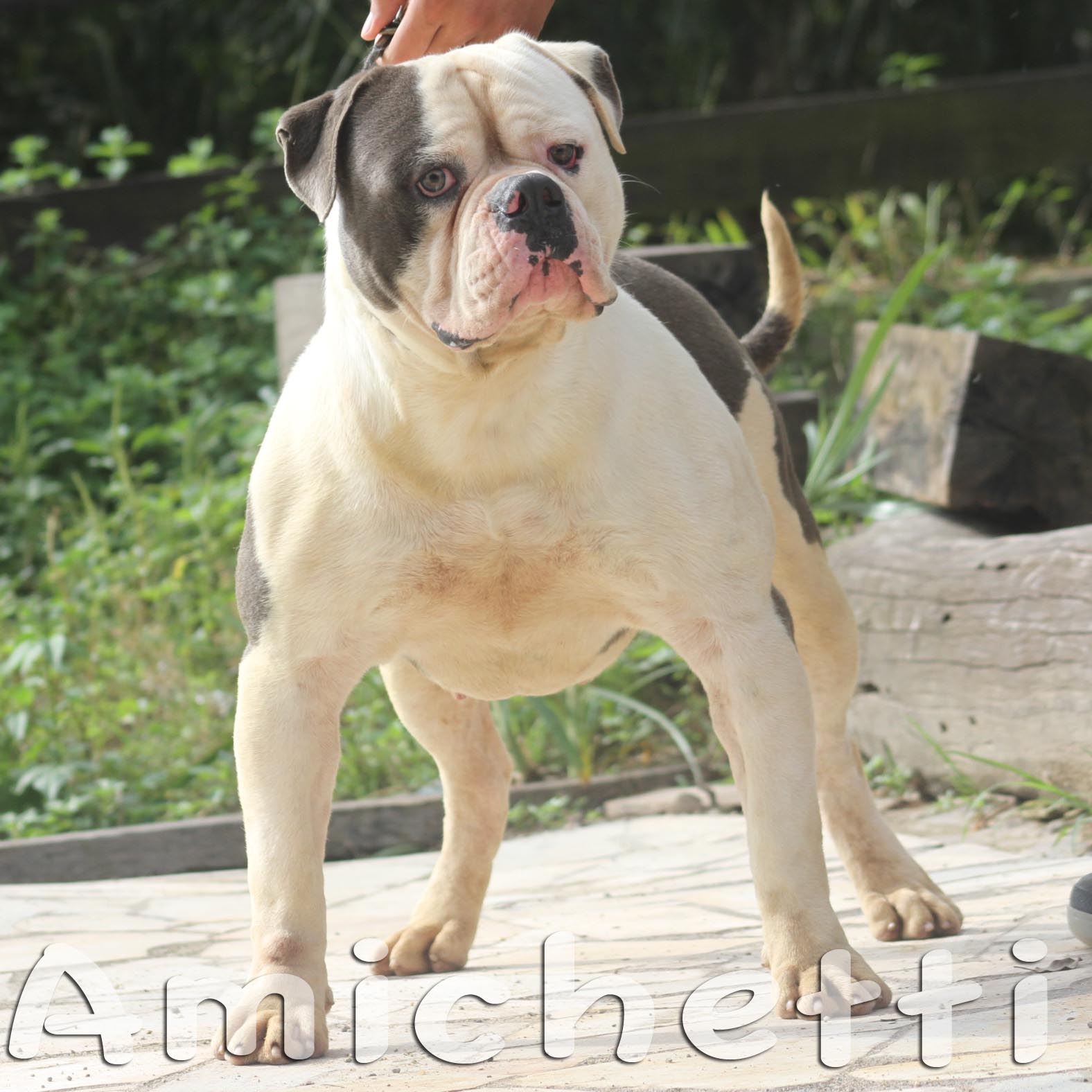 pode ser tigrado, vermelho, cinza, castanho ou preto, ou piratasTemperamento AmigoOlde Inglês Bulldogges tem temperamento dócil, mas é capaz de ser protetor, corajoso e atlético, de aparência feroz, determinada e corajosa, ousada e amigável em torno de sua família e amigos, mas um adversário sem medo a qualquer um que ameace seu dono ou propriedade. Altura, pesoAltura: Machos - 17-20 polegadas (43-51 cm). Fêmeas 16-19 polegadas (40-48 kg.)Peso: Machos - 60-80 libras (27-36 kg.) Fêmeas - 50-70 libras (22-31 kg.)Olde Inglês Bulldogges vai se adaptar a quase qualquer estilo de vida.ExercícioEsta raça precisa ser levada para caminhada diária ,são igualmente felizes com o exercício moderado. Eles podem ficar em boa forma com exercícios leves.Expectativa de Vida : 11 anos ou mais.PreçosCães com qualidade superior, com linhagens mais modernas, mais compactos, fortes e com bastante cabeça tem valores á partir dos r$ 5000,00 para cães de companhia até r$ 8000,00 .Também existem os bulldog exóticos rare collorque são ainda mais compactose raros e com valores superiores aos 20.000 dollares nos EUA.
pode ser tigrado, vermelho, cinza, castanho ou preto, ou piratasTemperamento AmigoOlde Inglês Bulldogges tem temperamento dócil, mas é capaz de ser protetor, corajoso e atlético, de aparência feroz, determinada e corajosa, ousada e amigável em torno de sua família e amigos, mas um adversário sem medo a qualquer um que ameace seu dono ou propriedade. Altura, pesoAltura: Machos - 17-20 polegadas (43-51 cm). Fêmeas 16-19 polegadas (40-48 kg.)Peso: Machos - 60-80 libras (27-36 kg.) Fêmeas - 50-70 libras (22-31 kg.)Olde Inglês Bulldogges vai se adaptar a quase qualquer estilo de vida.ExercícioEsta raça precisa ser levada para caminhada diária ,são igualmente felizes com o exercício moderado. Eles podem ficar em boa forma com exercícios leves.Expectativa de Vida : 11 anos ou mais.PreçosCães com qualidade superior, com linhagens mais modernas, mais compactos, fortes e com bastante cabeça tem valores á partir dos r$ 5000,00 para cães de companhia até r$ 8000,00 .Também existem os bulldog exóticos rare collorque são ainda mais compactose raros e com valores superiores aos 20.000 dollares nos EUA. -
BULLDOG Bully Old English Bulldog Filhotes Venda Comprar
Petclube Sustentável: Orienta Criação com amor dos animais domésticos para companhia Facilitando a Preservação da Mata Atlântica com incremento no Lençol Freático e mitigação do Aquecimento Global.
 Bulldog Bully Olde Bulldogge Compacto Musculoso Cabeça Pesada
Bulldog Bully Olde Bulldogge Compacto Musculoso Cabeça PesadaCONTATO COMPETCLUBE CAMP info@petclube.com.br/ amichettibully@gmail.com
F 11 99386-8744 hc / 96393-1128
Cães Bulldog tipo Bully com biotipo bem mais carregado, cabeçorra e ossatura pesada, compactos e amigosBulldog tipo Bully é sinônimo de buldogue Parrudo, Amigo de Crianças, vivem bem Indoor, Guardião Equilibrado e SaudávelBullies Petclube bulldog são cães impressionantes, massa compacta de musculosos, super saudáveis, se acomodam bem em centros metropolitanos seja num apartamento como em casas.Está foi uma escolha bem acertada doS Criadores Modernos de Bulldog , escolhendo padreadores e matrizes com um biotipo mais moderno, bastante valorizado por criadores e amantes do Universo Bulldog.Criador de Bulldog descendente direto do Olde English Bulldogge trazidos nas primeiras imigrações de europeus ao Brasil, destaque no google e facebook: Agende sua visita para comprar filhotes e conhecer buldogs bem parrudos pelo fone 11 99386 8744 hc / 4684 1047 hcConheça pessoalmente os cães bulldog tipo bully mais parrudos, mais fortes e companheiros fiéis.Nossos bulldogs possuem cabeças tipo bola de basquete e orelhas pequenas e bem inseridas, também possuem massa muscular mais saliente e podem viver bem indoor, esclarecem os criadores do Moderno Canil Amichetti.Mas também temos cães tradicionais trazidos dos rincões de nosso grande Brasil, explica o cinófilo Claudio Amichetti.Bulldog Bully: Nova tendência na cinofilia dos grandes centros urbanosCom a atitude positiva o bulldog bully type teve toda a atenção dos antigos proprietários de pitbull, boxer, rottweiller, bulldog ingês, labrador e staffordshire bull terrierOs bulldogs Amichetti podem viver em apartamentos e são grandes companheiros para passeios em parques se comportando muito bem com outros cães e brincando com crianças.Buldogue Petclube camp: Excelente Guardião e Bom Amigo, adora crianças, vivem bem em apartamentos.Vantagens do Buldogue bully:_Possuem cabeças avantajadas e bastante expressivas, corpo compacto e muito musculoso._Buldogue rústico, lindo, forte se adapta bem no campo como num apartamento devido sua personalidade equilibrada e tranqüila. Amante da família ._São mais compactos e ficam bem indoor, se adequando bem a apartamentos e casas._Amoroso com crianças com quem criam forte vínculo de amizade._Não apresenta dificuldade para cruzamento ou parto como é comum nos demais bulldogs._Excelente guardião, super equilibrado um cão sempre amigo da família e amigos
Agende sua visita para comprar filhotes e conhecer buldogs bem parrudos pelo fone 11 99386 8744 hc / 4684 1047 hcConheça pessoalmente os cães bulldog tipo bully mais parrudos, mais fortes e companheiros fiéis.Nossos bulldogs possuem cabeças tipo bola de basquete e orelhas pequenas e bem inseridas, também possuem massa muscular mais saliente e podem viver bem indoor, esclarecem os criadores do Moderno Canil Amichetti.Mas também temos cães tradicionais trazidos dos rincões de nosso grande Brasil, explica o cinófilo Claudio Amichetti.Bulldog Bully: Nova tendência na cinofilia dos grandes centros urbanosCom a atitude positiva o bulldog bully type teve toda a atenção dos antigos proprietários de pitbull, boxer, rottweiller, bulldog ingês, labrador e staffordshire bull terrierOs bulldogs Amichetti podem viver em apartamentos e são grandes companheiros para passeios em parques se comportando muito bem com outros cães e brincando com crianças.Buldogue Petclube camp: Excelente Guardião e Bom Amigo, adora crianças, vivem bem em apartamentos.Vantagens do Buldogue bully:_Possuem cabeças avantajadas e bastante expressivas, corpo compacto e muito musculoso._Buldogue rústico, lindo, forte se adapta bem no campo como num apartamento devido sua personalidade equilibrada e tranqüila. Amante da família ._São mais compactos e ficam bem indoor, se adequando bem a apartamentos e casas._Amoroso com crianças com quem criam forte vínculo de amizade._Não apresenta dificuldade para cruzamento ou parto como é comum nos demais bulldogs._Excelente guardião, super equilibrado um cão sempre amigo da família e amigos _Talentoso na lida com o gado além de apresentar forte presença intimidatória, bastando sua marcante presença para que seu território esteja defendido.Existem algumas variações do campeiro, os proprietários de centros metropolitanos como Rio de Janeiro e São Paulo tem preferido o tipo mais parrudo como conta o criador Claudio do Canil Amichetti:"O biotipo mais parrudo e compacto é uma preferência no sentido de cão de intimidação, cabem bem numa residência e num apartamento, cria uma sensação impactante, seria uma versão parruda de Olde English Bulldogge".O público encontrou no Bulldogue Red Nose um exemplar rústico, forte, amigo e tem se encantado com os cães em nosso sítio."Muitos apaixonados pelo pitbull mais forte tem visto nos bulldogs brasileiros uma nova opção para companhia já que não sofrem com as restrições impostas pela Lei, são cães super brincalhões, aceitam melhor outros cães e também são atraentes pelo público dos "fortões" explica Camila, veterinária que se apaixonou pela robustez e rusticidade dos cães do canil Amichetti.
_Talentoso na lida com o gado além de apresentar forte presença intimidatória, bastando sua marcante presença para que seu território esteja defendido.Existem algumas variações do campeiro, os proprietários de centros metropolitanos como Rio de Janeiro e São Paulo tem preferido o tipo mais parrudo como conta o criador Claudio do Canil Amichetti:"O biotipo mais parrudo e compacto é uma preferência no sentido de cão de intimidação, cabem bem numa residência e num apartamento, cria uma sensação impactante, seria uma versão parruda de Olde English Bulldogge".O público encontrou no Bulldogue Red Nose um exemplar rústico, forte, amigo e tem se encantado com os cães em nosso sítio."Muitos apaixonados pelo pitbull mais forte tem visto nos bulldogs brasileiros uma nova opção para companhia já que não sofrem com as restrições impostas pela Lei, são cães super brincalhões, aceitam melhor outros cães e também são atraentes pelo público dos "fortões" explica Camila, veterinária que se apaixonou pela robustez e rusticidade dos cães do canil Amichetti.
Origem do Antigo Bulldog:O buldogue (inglês: English Bulldog, onde bull significa "touro" e dog, "cão"), é uma raça oriunda da Inglaterra (Wikipédia).O Buldogue Campeiro tem sua origem nos Bulldogs que vieram para o Brasil trazidos pelos imigrantes europeus desde o século XVII.O Buldogue Campeiro tem como seu ancestral o Bulldog Inglês do tipo antigo conhecido como Old English Bulldog, aliás podemos observar várias pinturas antigas do século XV que comprovam a semelhança e identidade comum.O Antigo Buldogue Inglês, ou Olde English Bulldogge, cão de guarda e trabalho que sobreviveu até o início do Século XX, possui uma enorme legião de admiradores em todo o mundo, graças a sua rusticidade, agilidade e funcionalidade.Tais características, hoje perdidas no Moderno Buldogue Inglês, são os ingredientes principais das diversas tentativas de resgate deste antigo molosso por cinófilos Europeus e Americanos.Vale a pena destacar o Buldogue Americano, o Olde English Bulldogge, o Olde Victorian Bulldogge, o Original English Bulldogge, o Alapaha Blueblood Bulldog, dentre outros.Por volta do século XIV o Bulldog era um Tipo não uma raça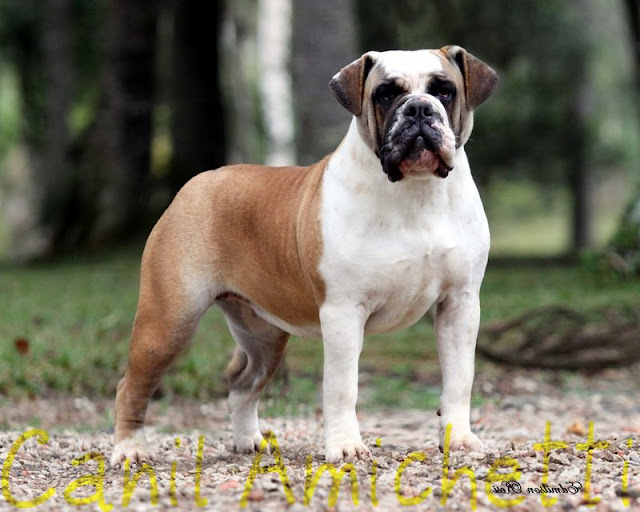 No berço de criação europeu os cães ‘bulldog’ eram um biotipo, e não uma raça.Diferentes cachorros do tipo ‘bulldog’ foram cruzados na Inglaterra, Espanha, Grã Bretanha, Itália, Alemanha e França, procurando cães combatentes e sanguinários foram usados como cães como o Dogue Malorquin, Olde Bulldogge (Grã-Bretanha) e os famosos cães dos açougueiros da Alemanha e Polônia.O Old English Bulldog certamente participou na formação do Buldogue Campeiro em suas cepas mais antigas.Aalis a quem defenda ser o Buldogue Campeiro ou Buldogue bully o legítimo Olde English Bulldogge.Afirmam que as linhas mais parrudas que se encontra prlo sertão brasileiro são cepas nativas trazidas por europeus imigrantes do início do século passado.Devido as difrentes linhas de bulldogs envolvidos tivemos o máximo de bravura, resistência e força dando a fama e ainda hoje perdura na alma das pessoas.
No berço de criação europeu os cães ‘bulldog’ eram um biotipo, e não uma raça.Diferentes cachorros do tipo ‘bulldog’ foram cruzados na Inglaterra, Espanha, Grã Bretanha, Itália, Alemanha e França, procurando cães combatentes e sanguinários foram usados como cães como o Dogue Malorquin, Olde Bulldogge (Grã-Bretanha) e os famosos cães dos açougueiros da Alemanha e Polônia.O Old English Bulldog certamente participou na formação do Buldogue Campeiro em suas cepas mais antigas.Aalis a quem defenda ser o Buldogue Campeiro ou Buldogue bully o legítimo Olde English Bulldogge.Afirmam que as linhas mais parrudas que se encontra prlo sertão brasileiro são cepas nativas trazidas por europeus imigrantes do início do século passado.Devido as difrentes linhas de bulldogs envolvidos tivemos o máximo de bravura, resistência e força dando a fama e ainda hoje perdura na alma das pessoas.Comentários de quem viu o buldog no trabalho
Nos conta o criador de cães Claudio Amichetti: Quando trabalhava nas fazendas na região de Tangará da Serra e Diamantino-MT, na década de noventa, pude observar vários bulldogs pretos, com caninos muito grandes e comissura labial bem desenvolvida, lidavam bem com o gado, eram valentes, acompanhavam e cuidavam das crianças em suas travessuras. Excelente temperamento tendo como destaque a característica do físico avantajado, parrudo e índole amiga e confiável com as crianças. Onde Comprar Filhotes de Bulldog Antigo Olde English Bulldogge ?
Onde Comprar Filhotes de Bulldog Antigo Olde English Bulldogge ?Ligue no Canil e Criador Petclube Bulldog Camp- SP, que possui lindos exemplares de Bulldog para venda, fortes, rústicos, equilibrados, agende sua visita para comprar filhotes e conhecer buldogs bem parrudos pelo fone 11 9386 8744 hc 4684 1047 hc- SP.
YOUTUBE SOBRE BULDOGUE Brasileiro e Olde Bulldogge REd Nose & Blue Nosefilhotes a venda chocolate e branco Raríssimos no Brasil{youtube}6rhx_rIjL8Q,Pwgt7PdE_jg,RoHcarwvq7o,_iv5gwivun4,2BbRzdw1rh0,Jk1ptToVh4s{/youtube}
Qual o preço de filhotes do bulldog bully?Varia muito, dependendo do criador e linha de sangue com padrão moderno ou um tipo comum com pouca seletividade.Geralmente, os filhotes são mais caros, embora muito mais impressionantes nos criadores de grandes centros urbanos pois tem mais acesso as novas linhas de sangue e possuirem um plantel mais moderno, baseado no padrão de super buldog´s mais compactos, fortes e com tipicidade aparente, como fala o criador Claudio do Canil Amichetti, "nossos cães são todos parrudos e mais compactos".Em Sao Paulo, Rio de Janeiro, Belo Horizonte, Porto Alegre,Curitiba, Brasilia, Salvador, Campinas, Osasco, Recife, Fortaleza, Ribeirao Preto, Goiania,Santo Andre, Florianopolis, Apucarana, Santos, Cuiaba, Sao Jose Dos Campos, Vitoria, Campo Grande, Sorocaba, Vila Velha, Natal, Sao Vicente o preço dos filhotes de cães de estimação, variam de r$ 3.500,00-9.800,00.Animais para procriação, inteiros, atendendo a força da Lei, só podem ser comercializados para criadores devidamente inscritos na-Federação Cinológica e possuem um valor mais elevado.Petclube BULLDOG´S SINÔNIMO DECÃES PARRUDOS E AMIGOSPor favor agende sua visita em horário comercial pelos telefones: wthasapp 11 993868744 hc Petclube Sustentável: Orienta Criação com amor dos animais domésticos para companhia Facilitando a Preservação da Mata Atlântica com incremento no Lençol Freático e mitigação do Aquecimento Global.
Juquitiba Sao Paulo Brasil"A grandeza de uma nação pode ser julgada pelo modo que seus animais são tratados." (Mahatma Gandhi)
Agende uma agradável visita para adquirir seu filhote e faça belo passeio no santuário ecológico com a Mata Atlântica preservada. -
Bulldog Chocolate e Cinza Blue Nose Englsih bulldog British bulldog
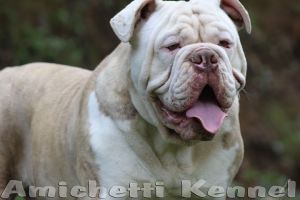 Bulldog Ingles Cores Raras
Bulldog Ingles Cores RarasExplicação do cinófilo e criador Petclube Bulldog Camp
As cores tri azul e preto de buldogues ingleses são as cores originais.Séculos atrás bulldogs eram usados para combater com touros e eles eram cães fortes e muito saudáveis, criados para trabalhar, isso por volta de 1700 até 1800
A raça como a conhecemos hoje foi originalmente criado a partir de várias raças Mastim, Mastiffs (que vem em preto e preto tri cores, pugs (vêm em preto), Bandogges (que vêm nas cores preto, tri e azul) e Bulldogs em grande parte de Espanha que também vêm em cores preto e tri.
A raça bulldog Inglês foi proibida para bullbaiting em 1835 até que ele foi salva por criadores de exposição.
Esta é a forma como a raça passou de um combate com touros e cão de função para um companheiro pet.
O primeiro padrão da raça Bulldog Inglês foi escrito em Londres em 1879.
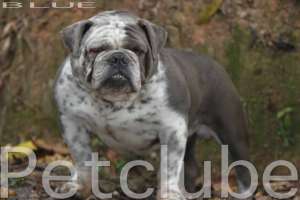 Quando ele se tornou um cão apenas para “show”alguns bulldogs foram chamados de "Black-Backed" porque eles eram pretos e tricolores. Eventualmente foi escrito no padrão da raça que a cor preta ou tan era indesejável, mas não tão ruim pois aconteceu em animais malhados de forma moderada ao longo de uma centena de anos após 1879. Isso é porque ele era tão comum. A cor preta não é uma desqualificação.
Quando ele se tornou um cão apenas para “show”alguns bulldogs foram chamados de "Black-Backed" porque eles eram pretos e tricolores. Eventualmente foi escrito no padrão da raça que a cor preta ou tan era indesejável, mas não tão ruim pois aconteceu em animais malhados de forma moderada ao longo de uma centena de anos após 1879. Isso é porque ele era tão comum. A cor preta não é uma desqualificação. Essa foi a razão pela qual negros e triblack bulldogs são raros hoje em dia muito embora esta cor foi normal no início da raça Bulldog Inglês
O que se torna raro se torna altamente desejável por isso era apenas uma questão de tempo antes que essas cores se tornassem altamente apreciadas.
Chocolate Perfect
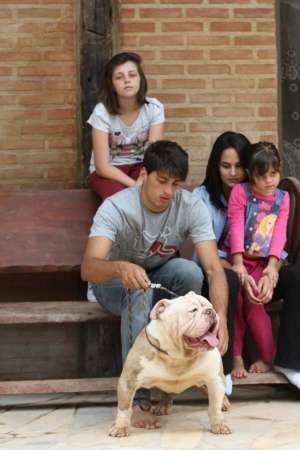 English Bulldog
English Bulldog
TRICOLOR BULLDOG BLUE/CHOCO GENEPETCLUBE Kennel
Youtube https://www.youtube.com/channel/UCWTOIIFQdl7oSCLpZJWaDjA
Contato info@petclube.com.br / amichettibully@gmail.comwhatssapp 11 99386-8744 hc Amichetti / 11 96393-1128 hc Dr. Gabriel
-
English Bulldog Sale Buy Exotic Good Bulldog Rare Color
A very big thank you Amichetti kennel
ENGLISH BULLDOG FEEDING
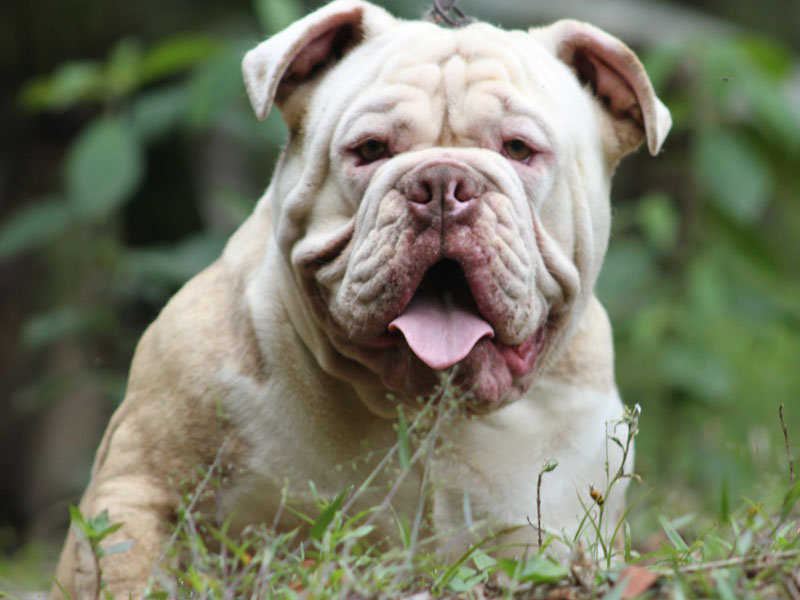 A frequent question we always receive from our clients has to do with the type of food and feeding technics we provide to our English bulldogs. It is very important to keep in mind that English bulldogs are somewhat different to most breeds, and the fact that correct feeding technics are of utmost importance during and after their full development.
A frequent question we always receive from our clients has to do with the type of food and feeding technics we provide to our English bulldogs. It is very important to keep in mind that English bulldogs are somewhat different to most breeds, and the fact that correct feeding technics are of utmost importance during and after their full development.Your English bulldog puppy does not know anything about nutrition. He only knows what tastes good. It is up to you to know what and how to feed your buddy so he will get everything he needs to stay healthy and happy.
Nutrients Necessities
Your English bulldog puppy needs proteins, carbohydrates, fats, vitamins and minerals for uptime growth and health.Proteins are used for growth and repair of muscles, bones and other bodily tissues. They are also used for production of antibodies, enzymes and hormones.
Carbohydrates are metabolized into glucose, the body’s principal energy source.
Fats are also used for energy, along with hormone production, nervous system function and vitamin transport.
Vitamins and minerals participate in muscle and nerve function, bone growth, healing, metabolism and fluid balance.
English bulldogs also need plenty of fresh, clean water. Adequate water intake also helps prevent formation of urinary stones, which is potential problem for this breed.
At WB English bulldogs we recommend to new English bulldog families to continue to provide the same type of food the breeder was using prior to the release of the puppy. In our case we like to use Taste of the Wild (LAMB). We have used several other brands over the years and so far taste of the wild (LAMB) has worked great for our puppies and adults.
When feeding our English bulldog puppies for sale, we take into consideration things such as the amount of protein and fat they should receive in the first few weeks of age. There are other brands in the market that may provide the same or at least close to the same amount of protein and fat but important things such as ingredients of the food, allergies it might cause, as well as the amount of waste the dog will produce along with the characteristic gas passing “feature” that comes standard with this breed are things that one should always keep in mind when selecting the food you want to feed your new English bulldog puppy.
As professional breeders of English bulldogs we always let our clients know about the food we give to our puppies as well as other supplements that we use so that new owners of the English bulldog puppies can continue with the same process; but we do understand that a lot of times people may decide to change both the type of food and feeding technics based on what they may consider it is correct or better for their English bulldogs or perhaps after receiving veterinarian advise.
For those of you who have decided to continue to use Taste of the wild we do make emphasis that the one type we feed our
English bulldog puppies is labeled as taste of the wild (LAMB) .
The number of times you feed an English bulldog puppy is also very important. The younger the puppy is the more often one has to feed the puppy. For breeders it is a lot of work due to the fact that we have to care for the puppies since day one, feeding them at least every two (2) hours. By the time we usually release our English bulldog puppies to their new loving families the puppies will be at least eight (8) weeks old and they will be eating solid food. At this stage it is recommended to feed the puppies three (3) times a day; once in the morning, afternoon, and early evening. Sometimes due to a matter of schedule or advise from friends, breeders or veterinarians; families will feed the puppy two (2) times a day which will make things a little bit easy for the family training the English bulldog, and if this is the case the correct amount of food should be provided to the puppy based on their body weight as well as the age of the puppy. A feeding guide or table should be available to you on the bag of food you use.
In most cases it is recommended for an English bulldog to be on the puppy formula for the first year of life and then a gradual change to an adult formula containing the same nutrients should be given.
It is important to keep in mind that if you as an English bulldog puppy owner encounter any issues with your dog such as allergies or other common illnesses among bulldogs then veterinarian advise should be taken.
Supplements:
Why should you provide supplements to your English bulldog if the food has all they need?There is no doubt that using a premium food to feed your English bulldog puppy is the smart thing to do. This food will provide the puppy with the nutrients needed to have a long healthy life, but as breeders we use other things to supplement the diet of our English bulldogs so that we can keep them away as much as possible from common illnesses among them.
The use of the right type of supplements from an early stage in the development of the dog is key when raising English bulldogs than with a lot of other breeds. This is due to the fact that English bulldogs have a weaker skeletal system and a lower immune system than other breeds. Having the presence of supplements will help the puppy to develop into a healthier adult.
Ester Vitamin C is a great supplement to give English bulldogs since it will help make the joints stronger and help with the very common illness such as “Hip Dysplasia”. Eggs, cod liver oil, chicken breast, some vegetables are also great for them.
Along with the food we use we also recommend the multi vitamin NuVet, which is a human grade product, made with natural ingredients. It helps with a lot of the common issues the English bulldog breed encounters during their life. For detail information on NuVet and how to order instructions please visit our website and click on the link on top that says NuVet.
If you think you still have questions about the right food to feed your English bulldog puppy or the correct supplement or multi vitamins you can use; please feel free to contact us. Remember that English bulldogs are the best breed in the world; therefor quality food, treats and supplements are ideal when having them as pets.
ENGLISH BULLDOG BEHAVIOR
English bulldog puppies do not have as many behavioral issues as many other breeds. This is why we insist English bulldogs are the best breed in the world; but by no means we are saying they can not enable a behavior that can be undesirable for the new puppy owner. The most common issue families encounter is the propensity for chewing which can be corrected by directing the puppy towards his chew toys.
It can be very frustrating when you have an English bulldog that has one or more behavioral issues; but the most important thing is to remember that the puppy does not know you don’t like that behavior. Once you realize the fact that your new puppy thinks he is acting normal then you can put your frustration aside so that you can see what is causing that behavior and be able to take the steps necessary to change it.
There are several reasons why a dog may engage in undesirable or destructive behavior. Some of those reasons can be:
lack of attention, interesting smells that make them dig, they get bored, they start teething, or get affected by stress etc.
A lot of times bulldogs may show signals that may indicate a bad behavior but often this happens when the dog feels lonely, ignored, neglected or simply no training has been provided by the owners. Other things that cause an unexpected change in behavior can be:
Health issues: A lot of times when they feel ill, in pain, or experience a psychological event; dogs can start acting out. It is important to receive veterinarian feed back if you notice a sudden change in your dog’ behaivor.
Bad diet: Keep in mind that English bulldogs need a good combination of carbohydrates, proteins, and minerals. If the puppy or adult bulldog is receiving too much or too little of one of this categories a change in the activity level may occur specially if you use sugars and starches as part of the diet of your pet.
Exercise: Even though English bulldogs are part of the non- sporting breed group and their activity level is quite low; we recommend that your bulldogs receives daily exercise. With adults, walking around the block will help, and with puppies playtime with the family is the best. This will prevent the puppy or adult to become bored and to start engaging destructive behaviors.
Lack of Leadership: As you may know English bulldogs are somewhat stubborn and tend to do things their way. Some times they even start acting out because they think they are their own masters and even yours too. It is of utmost importance to show the bulldog who is the pack leader to prevent an unwanted behavior. Keep in mind that taking the role as pack leader should happen immediately after your bring an English bulldog puppy home for the first time but in case you are having difficulties with your older bulldog it is never too late to start.
The term "Bulldog" was first mentioned in literature around 1500, the oldest spelling of the word being Bondogge and Bolddogge. The first reference to the word with the modern spelling is dated 1631 or 1632 in a letter by a man named Preswick Eaton where he writes: "procuer mee two good Bulldogs, and let them be sent by ye first shipp".[9] In 1666, English scientist Christopher Merret applied: "Canis pugnax, a Butchers Bull or Bear Dog", as an entry in his Pinax Rerum Naturalium Britannicarum.[10]The designation "bull" was applied because of the dog's use in the sport of bull baiting. This entailed the setting of dogs (after placing wagers on each dog) onto a tethered bull. The dog that grabbed the bull by the nose and pinned it to the ground would be the victor. It was common for a bull to maim or kill several dogs at such an event, either by goring, tossing, or trampling. Over the centuries, dogs used for bull-baiting developed the stocky bodies and massive heads and jaws that typify the breed as well as a ferocious and savage temperament. Bull-baiting, along with bear-baiting, reached the peak of its popularity in England in the early 1800s until they were both made illegal by the Cruelty to Animals Act 1835. This amended the existing legislation to protect animals from mistreatment and included (as "cattle") bulls, dogs, bears, and sheep, so that bull and bear-baiting as well as cockfighting became prohibited. Therefore, the Old English Bulldog had outlived its usefulness in England as a sporting animal and its active or "working" days were numbered. However, emigrants did have a use for such dogs in the New World. In mid-17th century New York, Bulldogs were used as a part of a citywide roundup effort led by Governor Richard Nicolls. Because cornering and leading wild bulls were dangerous, Bulldogs were trained to seize a bull by its nose long enough for a rope to be secured around its neck.[11] Bulldogs as pets were continually promoted by dog dealer Bill George.[12]
Despite slow maturation so that growing up is rarely achieved by two and a half years, Bulldogs' lives are relatively short. At five to six years of age they start to show signs of aging.
In time, the original old English Bulldog was crossed with the pug. The outcome was a shorter, wider dog with a brachycephalic skull. Though today's Bulldog looks tough, he cannot perform the job he was originally created for as he cannot withstand the rigors of running and being thrown by a bull, and also cannot grip with such a short muzzle.
The oldest single breed specialty club is The Bulldog Club (England), which was formed in 1878. Members of this club met frequently at the Blue Post pub on Oxford Street in London. There they wrote the first standard of perfection for the breed. In 1894 the two top Bulldogs, King Orry and Dockleaf, competed in a contest to see which dog could walk 20 miles (32 km). King Orry was reminiscent of the original Bulldogs, lighter boned and very athletic. Dockleaf was smaller and heavier set, more like modern Bulldogs. King Orry was declared the winner that year, finishing the 20-mile (32 km) walk while Dockleaf collapsed.[13] The Bulldog was officially recognized by the American Kennel Club in 1886.[4]
At the turn of the 20th century, Ch. Rodney Stone became the first Bulldog to command a price of $5,000 when he was bought by controversial Irish American political figure Richard Croker.
TRICOLOR GENE MUSCLE BULLYAmichetti Kennel
Facebookhttps://www.facebook.com/profile.php?id=100006118369229Youtube https://www.youtube.com/channel/UCWTOIIFQdl7oSCLpZJWaDjA
Contato info@petclube.com.br / amichettibully@gmail.comwhatssapp 11 99386-8744 hc Amichetti / 11 96393-1128 hc Dr. Gabriel
-
Olde English bulldogge USA British Bulldog Antigo Brasil
http://www.petclube.com.br/bulldog-olde-english-bulldogge.html
Thank you for visiting our website! Here at Petclube Bullies we pride ourselves in producing high quality Olde English Bulldogges. We are a small breeder located inJuquitiba SP BR. Our Olde English Bulldogge family boasts great blood lines with a variety of pedigree ancestry. The Olde English Bulldogge breed is one we have come to love and enjoy. Their athletic build makes them great companions for all lifestyles; while their relaxed spirit allows them to be content while calm. We have three boys that love to play with our dogs; this is a testimony to how loving and gentle an Olde English Bulldogge is with children. Our Bulldogges are our pets, and they are members of our family. One of the benefits of having our dogs is to share the joy they bring with others. It is a pleasure to see puppies go to homes where they will be loved and appreciated. Thanks for considering Petclube Bullies in your search for a new family friend. Feel free to call or email us anytime; we are happy to answer any questions you may have.
Olde English Bulldogge Height:
Males: 17 - 23 inches
Females: 15 - 21 inchesOlde English Bulldogge Weight:
50 - 120 lbs.
Olde English Bulldogge Coat:
Short
Olde English Bulldogge Temperament:
Stable, trustworthy, and great with Family and children.Olde English Bulldogge Health Issues:
Very healthy; should not have the many health problems of the English BulldogWE RECOMMEND USING NUVET FOR YOUR FAMILY FRIEND!
CLICK THE LINK BELOWCLICK HERE
International Olde English Bulldogge Assoc. (IOEBA)
CHECK OUT OUR PUPPIES FOR SALE!BREEDINGS PLANNED!
BULLIES
LDE ENGLISH BULLDOGGE - OLDE ENGLISH BULLDOGGE PUPPIES - OLDE ENGLISH BULLDOGGE PUPPIES - OLDE ENGLISH BULLDOGGE BREEDER - OLDE ENGLISH BULLDOGGE BREEDER Best Temperamente - BULLY PUPPIES - OLDE ENGLISH BULLDOGGE for sale - OLDE ENGLISH BULLDOGGE for buy- OLDE ENGLISH BULLDOGGE PUPPIES in usa &brasil -
GUARDIAN GROUP (UKC Standard as of January 1, 2014)
Breed Standard
Click photo for larger ViewHISTORY
Bulldogs were created for the English sport of bull baiting, practiced from approximately 1100 until 1835. By the middle of the 1800’s, the sport was no longer legal, and the athletic bulldog quickly began to disappear. Because the bulldog was revived solely for the conformation venue, selective breeding for appearance severely compromised the health and lifespan of this once agile, athletic and happy breed.
In 1971 a breeding project began using a linebreeding scheme developed by Dr. Fechimer of Ohio State to rapidly achieve a purebred dog. The goal of this project was to return the bulldog to the appearance of the “Regency-Period” bulldog, now named the Olde English Bulldogge (OEB) to clearly differentiate the new breed from the modern English Bulldog.
Today’s Olde English Bulldogge matches the looks of the bull baiting dog of the early 1800’s. They are, first and foremost, excellent companions, while also possessing the drive, temperament and agility to perform in numerous working venues as well as being service dogs. The revival of a healthy dog with the longevity to live well into its teens is a primary goal.
The Olde English Bulldogge was recognized by the United Kennel Club on January 1, 2014.
GENERAL APPEARANCE
The Olde English Bulldogge is a muscular, medium sized dog of great strength, and possessed of fluid, agile movement. He is well balanced and proportioned, while appearing capable of performing without any breathing restrictions in either heat or in cold.
Disqualifications: Unilateral or bilateral cryptorchid.
CHARACTERISTICS
The disposition of the Olde English Bulldogge is confident, friendly and alert. An OEB should be an animated and expressive dog, both in and out of the show ring.
Fault: Shyness in a mature dog.
Disqualification: Viciousness or extreme shyness.
HEAD
Serious Faults: Excessive wrinkle, lack of pigment around eyes, nose or mouth.
SKULL – The skull is large and well-proportioned to the dog’s muscular body and prominent shoulders. There is a defined furrow from the stop to the occiput.
Serious Faults: Narrow skull; domed forehead.
MUZZLE – The muzzle appears square, wide and deep, with definite layback. Distance from the tip of the nose to the stop does not exceed one-third of the distance from the tip of the nose to the occiput. Flews are semi-pendulous.
TEETH - Bite is undershot or reverse scissors. Lower jawbone is moderately curved from front to back. Broken, chipped or extracted teeth are not to be faulted. Exposed canine teeth are to be faulted.
Disqualifications: Wry jaw; overbite.
NOSE - Nostrils are wide, with a line running vertically between nostrils from the tip of nose down to the bottom of the upper lip. Nose is large and broad in relationship to the width of the muzzle. Nose color is black.
Serious Fault: Slit nostrils.
Disqualification: Any color nose other than black.
EYES - Eyes are medium in size and almond shaped. They are set wide and low, level with the top of the muzzle. Color is dark to light brown, with black pigmented eye rims.
Disqualifications: Any eye color other than brown; wall eyes; crossed eyes.
EARS - Ears are rose, button or tulip. Rose is preferred. They are set high, wide and to the back outer edge of the skull. The ears are small in size.
NECK
The neck is medium length, wide, and slightly arched. It is slightly smaller than the head at their junction, and widens to point of the shoulders. Loose from jaw to chest, forming a double dewlap.
FOREQUARTERS
Shoulders are broad, heavily muscled and have a separation between the shoulder blades. Moderate angulation of the shoulder blade, which should also be roughly equal in length to the upper foreleg.
ELBOWS - Elbows should be neither in nor out.
FORELEGS - Forelegs are of medium bone, set straight, with strong pasterns.
BODY
Sturdy, powerful and slightly rectangular when viewed from the side. Chest is wide and deep, with a muscular brisket, and ribs well-sprung. There should be a distinct tuck between ribs and hindquarters. There is a dip behind the whithers; topline rises over the loin with the appearance of a slight roach.
Faults: Narrow rib cage.
HINDQUARTERS
Hind legs are well muscled and have the appearance of being slightly longer than the forelegs.
Viewed from the rear, the hind legs should be straight, parallel and set apart. Angulation is moderate.
Fault: Cow-hocked or bow-hocked.
FEET
Feet are strong and rounded, with well-arched toes.
Faults: Flat feet or splayed toes.
TAIL
The characteristic tail is often referred to as a crank or pump handle tail. Straight tails are also acceptable. The tail is set on as a natural extension of the topline, and tapers to a point. When the dog is relaxed, the tail is carried low and extends approximately to the hock. When the dog is moving, the tail is carried level with the backline. When the dog is excited, the tail may be carried in a raised, upright position (challenge tail), but never curled over the back (gay tail).
Faults: Tail curling 360 degrees or carried up over the back.
Disqualifications: Kinked, docked, natural bob, or screw tail (a kinked tail is a tail with one or more sharp bends).
COAT
Coat is short, close and of medium density. It should be shiny, showing good health.
Faults: Fringe, feather or curl in the coat.
COLOR
Accepted color patterns include brindle, and solid colors, with or without white.
Brindle is defined as a fine streaked or striped effect or pattern of black or tan hairs with hairs of a lighter or darker background color. Shades of colors accepted include red brindle, fawn brindle, brown brindle, and grey brindle; either solid or pied.
Accepted solid colors include white, fawn or red; with or without white.
Disqualifications: Albinism. Blue, black, and black with rust /mahogany/tan trim.
GAIT
At a trot, the gait is smooth, powerful, energetic and confident. A slight roll to the gait should not be faulted. Footfalls approach the centerline as trotting speed increases.
When viewed from the front or rear, the legs turn neither in nor out, nor do feet cross or interfere with each other. From the side, the front legs should reach out smoothly with no obvious pounding.
HEIGHT AND WEIGHT
Overall balance is never to be sacrificed in favor of size.
Dogs should be 60 to 80 pounds, and 17 to 20 inches at the withers. Bitches should be 50 to 70 pounds, and 16 to 19 inches at the withers.
Neither dog nor bitch appears fat. Measurements apply at age 2 or older. Weight of both dog and bitch should be proportionate to height.
DISQUALIFICATIONS
( A dog with a Disqualification must not be considered for placement in a conformation event, and must be reported to UKC.)
Unilateral or bilateral cryptorchid.
Viciousness or extreme shyness.
Albinism.
Wry jaw.
Overbite.
Any color nose other than black.
Any eye color other than brown.
Wall eyes
Crossed eyes.
Kinked, docked, natural bob, or screw tail (a kinked tail is a tail with one or more sharp bends).Facebookhttps://www.facebook.com/petclube/
Youtubehttps://www.youtube.com/channel/UCWTOIIFQdl7oSCLpZJWaDjA
Contato info@petclube.com.br / amichettibully@gmail.comwhatssapp 11 99386-8744 hc Amichetti / 11 96393-1128 hc Dr. Gabriel
OLDE ENGLISH BULLDOGGE PUPPIES - OLD ENGLISH BULLDOGGE PUPPIES - Old bulldog puppies
Siga nosso Instagram e fique por dentro das últimas novidades e dos mais adoráveis bebês pet! Descubra filhotes de cães e gatos que vão derreter seu coração. Não perca a chance de acompanhar fotos encantadoras e conteúdos exclusivos. Acesse agora e se apaixone por nossos pequenos peludos!
Últimas Postagens
- Você sabia que os Maine Coons Red são um dos mais icônicos e charmosos da raça?
- PetClube Parceiros da Natureza onde o Amor se Encontra com Filhotes Gatos Maine Coon e Ragdoll Alegres e Felizes
- Curso Parceiros da Natureza, você viverá uma experiência única de Banho de Floresta (Shinrin-Yoku) e conexão profunda com cães e gatos!
- Curso Parceiros da Natureza: Uma Jornada Profunda ao Lado de Cães e Gatos
- Munchkin Toys, Encanto do mundo mini gatinhos: Pequenos, Raros e Muito Especiais
